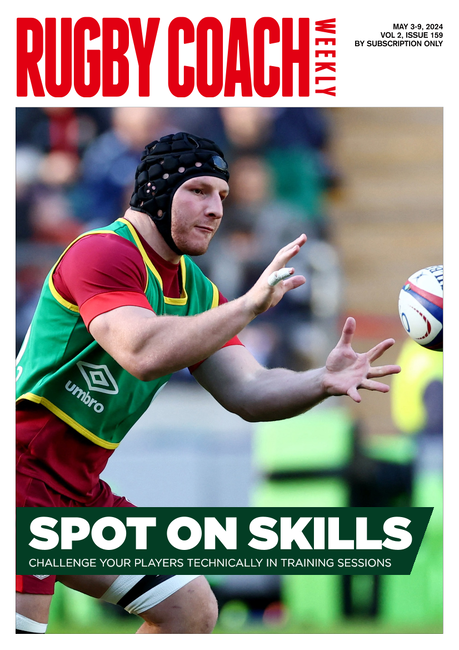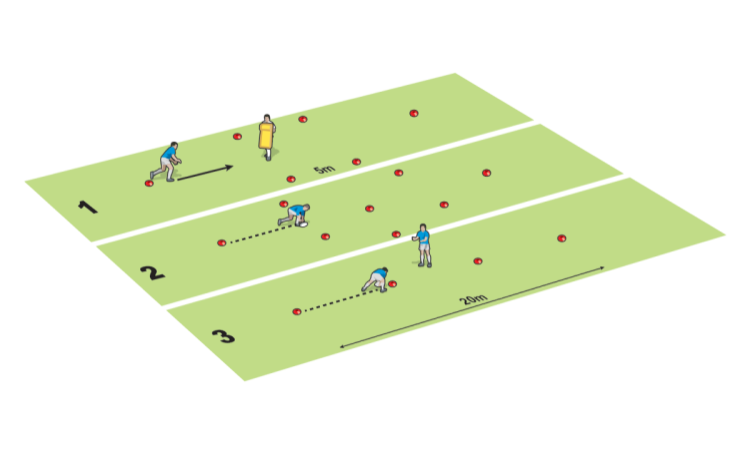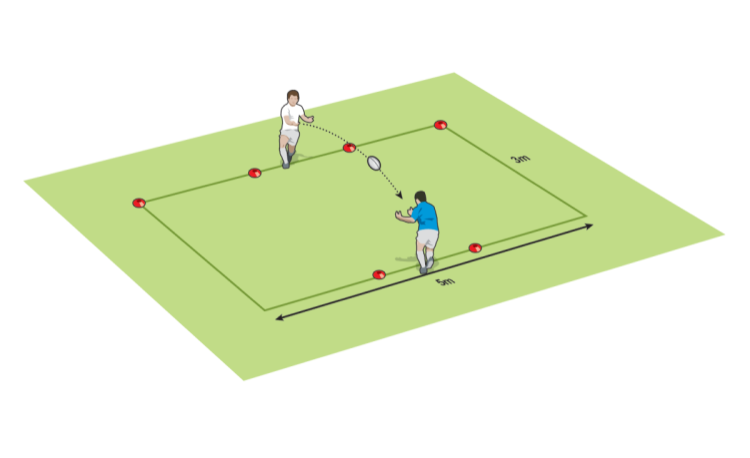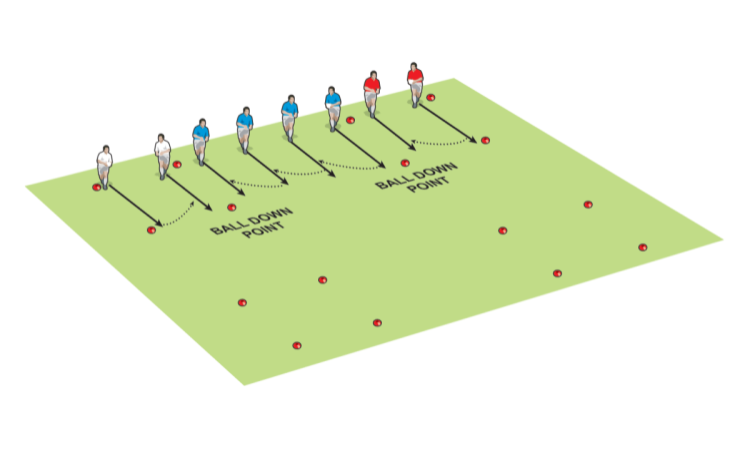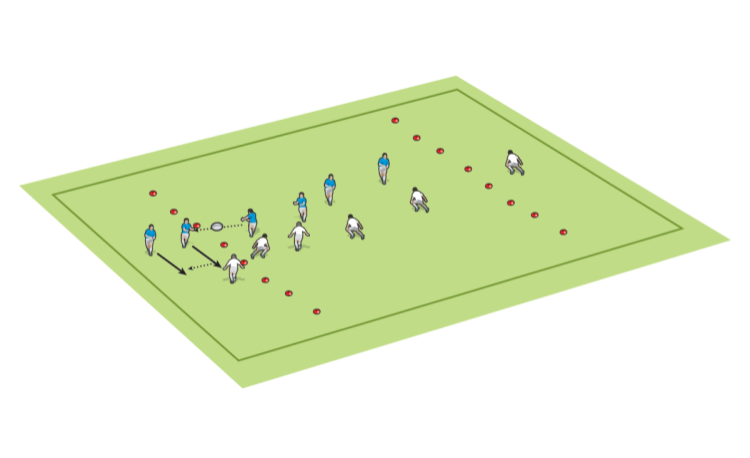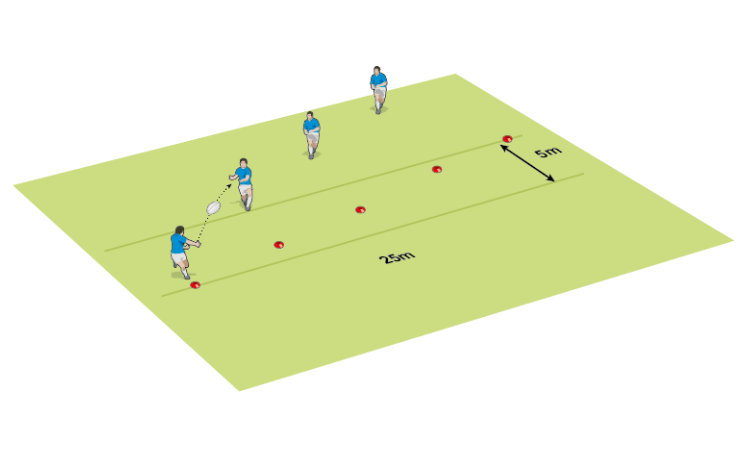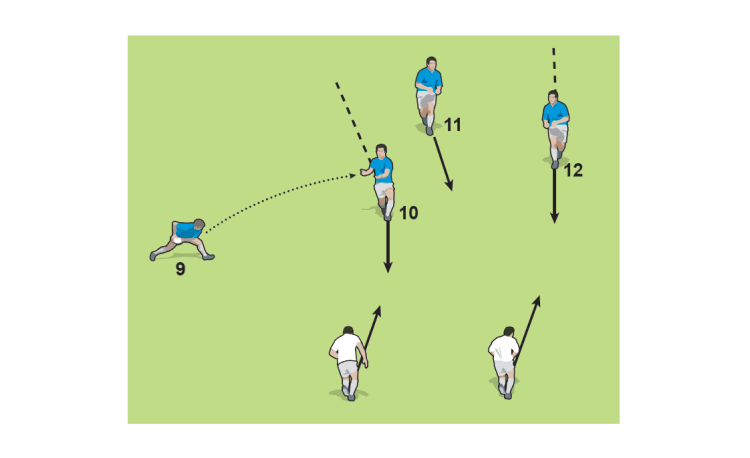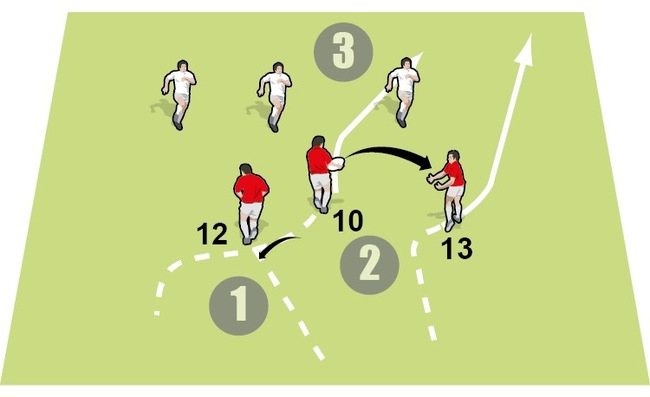You are viewing
1 of your 2 free articles
How to train for “slices”
Set up a realistic training scenario so your players can practise backs moves like “slice”, where timing, angles and decisions all depend on how the defence sets up and then reacts.
A slice is a jargon term for a backs move where two players change running angles so one goes in front of the other. In other words, they switch positions. The passer then has to decide which player is in the best position to receive a pass and then dent the defence.
THE CHALLENGE
Create a training scenario that:
- Improves the techniques to perform the play
- Puts that technique under pressure in game-like situations
- Allows plenty of chances to explore various possibilities
TRAINING TIME
Allow 20 minutes this week. Return to the play every week.
1. Walkthrough
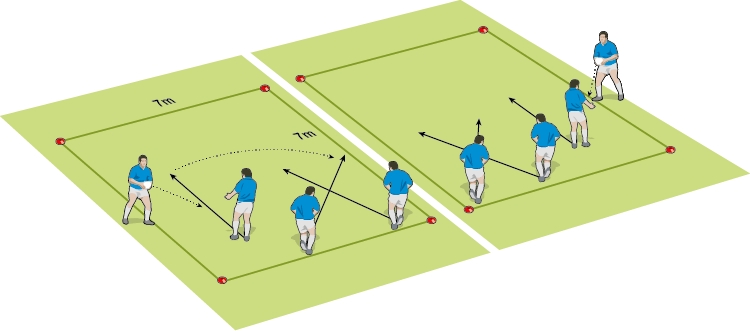
In a confined space, have the players walk through the play. This will give the idea of potential running lines and passing possibilities.
Work from both sides, and highlight possible difficulties, like the length of the pass or who runs when.
The confined space allows lots of attempts. Ensure the players have lots of goes and swap positions. You can add a defender to help the players consider the visual cues.
2. Passive defenders
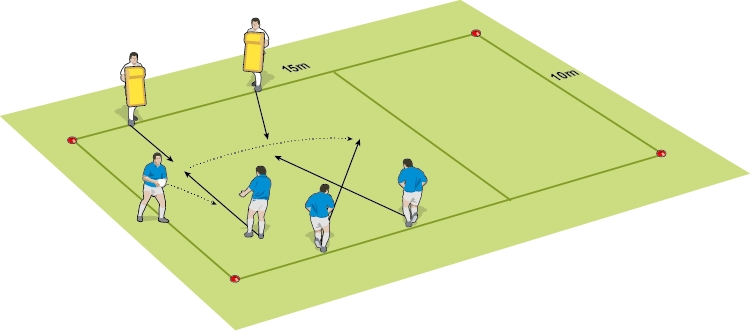
Run through the play, with defenders jogging forward and offering obvious spaces to attack. You can stand behind the attack to indicate where the defenders will run.
You can make the box wider to increase pressure on the passing.
3. Active defence
The defenders now try to read the play. Make this part quite competitive, with perhaps a small forfeit (like one star jump) if the other team is successful.
In the picture above, the second pad-holder deliberately targets a channel to force a decision.
4. Dynamic start
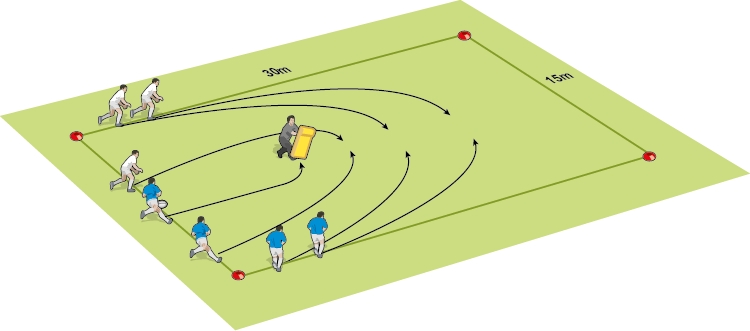
Move the players around before they realign to set up the move. This replicates the dynamic start points which might happen from rucks or scrums that wheel.
You, or another player, runs out with a ruck pad. Put it down to indicate where the ruck will be.
As you run into position, the attackers and defenders move and realign before they attack using the play.
Newsletter Sign Up
Coaches Testimonials

Gerald Kearney, Downtown Las Vegas Soccer Club

Paul Butler, Florida, USA

Rick Shields, Springboro, USA

Tony Green, Pierrefonds Titans, Quebec, Canada
Subscribe Today
Be a more effective, more successful rugby coach
In a recent survey 89% of subscribers said Rugby Coach Weekly makes them more confident, 91% said Rugby Coach Weekly makes them a more effective coach and 93% said Rugby Coach Weekly makes them more inspired.
Get Weekly Inspiration
All the latest techniques and approaches
Rugby Coach Weekly offers proven and easy to use rugby drills, coaching sessions, practice plans, small-sided games, warm-ups, training tips and advice.
We've been at the cutting edge of rugby coaching since we launched in 2005, creating resources for the grassroots youth coach, following best practice from around the world and insights from the professional game.


